In elementary school, we were taught how Native Americans use all the animal parts without wasting even a single piece. There are lessons to be learned here, and not just about our wasteful nature.
Animal bones can be used in a variety of ways, especially when it comes to survival. Why waste something if you can use it?
Look at the bones of a deer. A lower leg bone can be turned into a gun rack or used to create a weapon like a sword or a spear.
While these are simple and straightforward suggestions, there are many other uses for animal bones that you may not know, and these ideas could help you avoid potential disaster.
Let’s take a look at the survival benefits of animal bones and how you can use them to survive all kinds of situations and limit waste.
Survival Foods
1. Bone Broth:
It is no secret that bones are ideal for soup stocks, and the marrow is excellent for cooking. (Try roasted seasoned marrow on toast, delicious).
Related: How To Can Bone Broth At Home With 2 Years Shelf Life
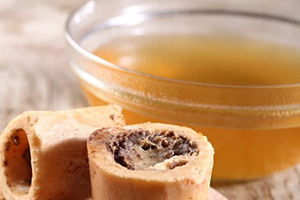
Full of essential nutrients, animal bones are great in a survival situation. Throw leftover bones into a pot with water, veggies, and herbs and let them simmer for several hours to create a delicious bone broth that you can use or freeze for later. Bone broth is a quick and easy way to get nutrients when supplies are low.
Bone broth is rich in collagen and minerals. It is fantastic for digestive health, relieves joint pain, helps detoxify, and aids in healing wounds.
• Sip bone stock in the morning to start the day off right and get much-needed nutrients.
• Bone broth is often used in soup and can also be added to stuffing, gravy, or mashed potatoes to take your turkey dinner to the next level. Pretty much anywhere you add liquid, you can substitute for bone broth and reap the benefits.
• Heavy bones (such as leg bones) are full of nutritious marrow. This marrow can be scraped out, cooked, and consumed to sustain life when nothing else is available.
2. Bone Meal:
You can also grind up bones to create bone meal easily at home.
Bone meal makes an excellent fertilizer for your garden and guarantees that fresh produce is created right outside your backdoor.
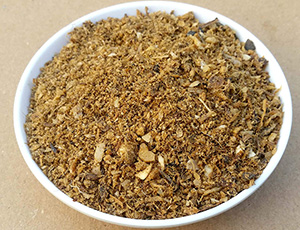
Bone meal consists of a mixture of finely and coarsely ground animal bones and other parts that are often discarded after a successful hunt.
Organic gardeners often use bone meal to add phosphorus to their garden soil.
It is entirely natural, making it a safe alternative to commercial fertilizers.
Bone meal can be made using any animal’s bones, although beef bones are most commonly used for creating this product commercially.
The key to creating a safe and effective bone meal is to boil the bones for an extended period before grinding them up to make the fertilizer. Boiling the bones will kill any bacteria and help you avoid any potential risk of illness.
Bone meal increases the phosphorus in your garden soil, a compound essential to plant growth. The phosphorus created by bone meal is easy for plants to consume and will help your plant grow bigger and stronger.
3. Bone Paste:
You can grind bones up to create a bone paste.
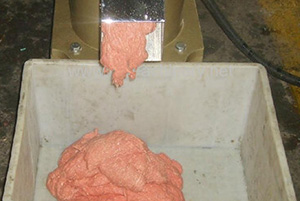
Bone paste is easy to make and is super delicious for both animals and humans. Full of nutrients, this paste is great to have on hand in case of an emergency.
Bone paste is a fantastic food that is rich in nutrients.
It can also be used for many other survival tasks:
• To heal wounds.
• Prevent infection.
• Stop itching.
• To treat tooth pain.
Survival Weapons
Bones are super strong and can easily be sharpened or shaped. Thus, bones make excellent weapons.
Turn animal bones into knives, clubs, or other weapons to keep on hand as tools or personal protection.
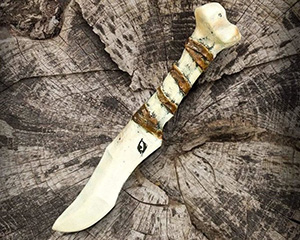 • Create a knife: Create a knife out of fallow bones by finding a good-sized bone to work with (e.g., a leg bone) and break it in half with a rock. Then, pick out the sharpest piece that most resembles a knife and sharpen it with a stone, as you would a regular knife. Create a handle by wedging the bone into a smoothed piece of wood or wrapping a strong cloth around its base.
• Create a knife: Create a knife out of fallow bones by finding a good-sized bone to work with (e.g., a leg bone) and break it in half with a rock. Then, pick out the sharpest piece that most resembles a knife and sharpen it with a stone, as you would a regular knife. Create a handle by wedging the bone into a smoothed piece of wood or wrapping a strong cloth around its base.
• Construct a spear: Much like a bone knife, you can easily create a spear by sharpening a bone and affixing it to a large stick or pole. Use the spear for hunting, fishing, or personal protection.
• Craft a sword: You can easily create a sword from animal bones by sharpening the edges using a large rock and wrapping the bottom in a heavy cloth to form a handle. To make a sword, you would follow the same steps as making a knife but on a larger scale.
Tools
Animal bones can be used to create a variety of different tools and are often just as strong as their metal counterparts.
You can even use bones to make sewing needles so you can repair torn clothing (or create new clothing) on the fly.
• You can use animal bones to create sewing needles, handy if you find yourself lost or trapped in the wilderness without access to a store.
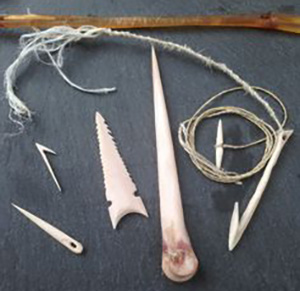
• Animal bones can be used to craft a shovel. Throughout history, animal bones, particularly the shoulder blade, have been used as shovels. Animal bone shovels were a commonly used tool among Cherokee tribes and during the time of early man. Shovels would be created using large bones such as the shoulder or antlers of large game. These handmade shovels would then be used to dig out large terrain areas.
• Animal bones make excellent garden tools and can easily be turned into garden hoes and small garden spades.
• The use of animal bones as tools and weapons is found throughout history. Items such as harpoons, daggers, smoothers, knives, dishes, cutlery, needles, axes, hide grainers, etc.
Medicinal Uses
Bones may also be useful as medicine.
Researchers have found that bones were once ground up and consumed to treat various conditions, including dizziness, leg cramps, swelling, and even malaria in prehistoric times.
• Bones are used as medicine to treat many conditions worldwide, from digestive issues to joint pain as well as osteoporosis and cancer.
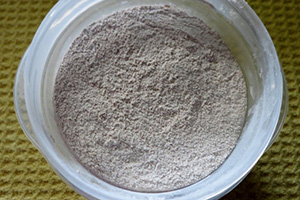
• Bone broth is thought to be a healing agent and was commonly used throughout history to heal wounds and promote health.
So, next time you come home from a successful hunt, consider utilizing the goldmine of marrow that lives within the bones of the animal you have hunted.
• You can extract calcium from animal bones and use it to create supplements if you cannot obtain these from a store or pharmacy.
• Use bones to create a stable splint and heal a broken bone when you cannot seek medical care.
• You can find many DIY recipes and treatments online that will allow you to harvest bones for medical uses.
• Animal bones have many other uses. They have been used medically as a substitute for human bone in more than 5,000 surgical cases in the United States.
*Remember, you must thoroughly clean all animal bones before using them to prevent the spread of bacteria.
Cleaning
To clean animal bones:
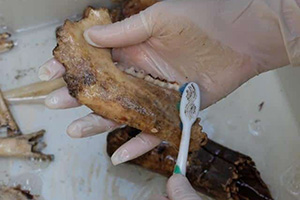 1. Remove soft tissue: Soaking the bones in water for a few weeks to a few months is one way of removing soft tissue from animal bones.
1. Remove soft tissue: Soaking the bones in water for a few weeks to a few months is one way of removing soft tissue from animal bones.
The amount of time that bones need to soak in the water will depend on the amount of soft tissue that is present.
2. Degrease the bones: A mixture of dish soap and ammonia works to degrease bones. There are a variety of options for degreasing animal bones, and tutorials can be found easily online.
3. Bleach or whiten: Finally, with the bones cleaned and degreased, you will want to whiten them if you plan to display or use them. Whiten animal bones by soaking them in a strong peroxide solution.
You can buy this at any beauty supply store. The stronger the solution, the faster the bleaching process.
Final Words
The survival uses for animal bones can be extremely beneficial, and bones should never be overlooked, wasted, or tossed out with the trash.
Utilizing as much of the animal as possible is not only good practice for the environment; it can also quickly provide you with access to tools, weapons, medicine, etc., that you may not be able to get in the event of an emergency.
So next time you come home from a successful hunt, consider saving some of the bones for use later. You never know when you might need them, and it is always best to be prepared!
You may also like:
25 Little Known Survival Uses For Tree Bark
An Insanely Effective Way to Build a 5 Year Food Stockpile (Video)
DIY Home Remedy For Bronchitis
No Power? No Problem! Methods for Home Security When the Grid is Gone

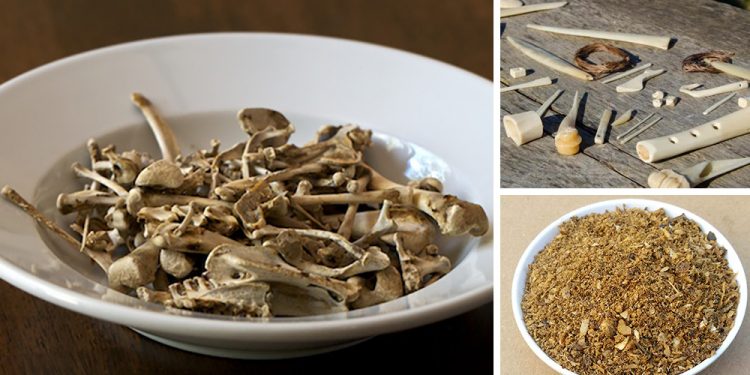
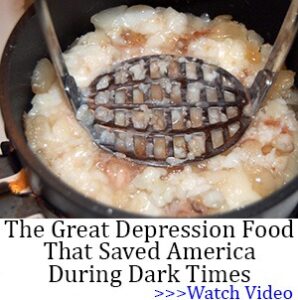













When I read that animal bones had been used for human bones in 5,000 surgical cases in the USA I was really surprised. Why? Because nearly 45 years ago my brother in law was in a hunting accident that took out most of the bones in his right hand. The doctor replaced the bones with cow bones. His hand has never caused him any trouble at all in all these many years. The only problems have been that every once in a while shot that was not located has worked it’s way out.
oh, forgot to say that I was surprised there were not more surgical cases than 5,000 in the USA.
I make bone broth. A very handy thing to have on hand. It becomes a soup base, gravy liquid, a broth to sip if sick, or broth for making bread dressing.
I have used bone meal in the garden but I’ve found if a chicken or rabbit died I bury it where I’m growing broccoli. Or summer squash. The plants or squash grow to enormous size. Old larger bones become handles for tools. My grandfather used antlers as the handles for many hand tools. I now use bones which are much more available than the antIers.
WOW, very interesting one!
I didn’t know about so many uses. I will try the bone meal fertilizer!
It is an amazing way to grow healthy plants. Good luck!
I wonder if soaking bones in either ammonia or 6% sodium hypochlorite destroys or significantly alters the minerals that one is attempting to preserver? It would be interesting to get an opinion from an advanced degree chemist or botanist to know for certain. I have a feeling that it would be detrimental to preserving those minerals but that is all that is, a feeling. No scientific background to even venture a guess.
I would think that reaching a roiling boil and then simmering for several hours would destroy any harmful pathogens in the bones, even spongiform encephalitis or mad cow disease which now also infects large populations of deer and possibly some elk.
That is another question in my mind: Does boiling destroy the spongiform encephalitis prion? If so, how long must one boil the meat to insure that the prion is dead, dead, dead?
Please don’t cook bones after whitening. They should either be used for bone broth or whitened for display or aesthetic uses.
Peroxide is an extreme acid, not meant for consumption at all. My emergency room was a poison control center, we had many kids poisoned by drinking peroxide. Cooking with it is bad news. Bleach is obvious, but even using it to sterilize, you should thoroughly rinse containers and never eat any food that has bleach on it.
Take care, Patriots.
@ left coast chuck. The prion is not alive. You can’t kill it. Not even autoclaving can kill something that is already dead. In the medical field we toss any and all equipment that has been used on a suspected patient with prion disease. In relation to covid: I suspect more Jakob Crutzfeld type cases not caused by eating contaminated meat will show up in time. In the mRNA vaccines. Cytotoxic spiked proteins, PEG and lipidnano particles are showing as escaped variants from the injection site and causing systemic organ damage, crossing the blood brain barrier and will establish prion disease in an unknown number of the population. The DNA adenovirus and attenuated virus vaccines only use the Cytotoxic spiked virus proteins. All bad. This is why I’ve not hunted. Trying to find a way to test a kill (a test kit) for use in the field is gonna make someone a lot of money. Stay safe!
When I see the sort of specific technical info you offer introduced into a casual forum I have to ask, what are your sources? As a general rule someone arguing a point needs to give support to the facts offered, not just try to overwhelm everybody with science. Marshaling obscure facts without sourcing them is not useful when the goal is educating all us carpenters and grease monkeys.
I found a writeup of this argument here: https://sciencebasedmedicine.org/can-mrna-based-covid-19-vaccines-cause-prion-disease/ The author disagrees with the theory and is attempting to debunk it, but there are links to the primary source in it so you can read the actual study and decide for yourself.
I am highly annoyed. I researched prions and how to immobilize them (that’s not the word the sites I visited used but is close.) I selected two sites, copied the,, formatted my comments on the sites I copied and the whole thing did not post. That was well over an hour’s time involved and I think the followers of this list would have found the information both interesting and informative regarding the possibility of a prion born disease in an end of the world situation.
With regard to the vaccinations, here in the PDRK they are having a lottery for folks who line up to get the shots. The whole staged (in my opinion) drama makes me wonder why there is so much emphasis on getting the vaccine. I am convinced in my own mind, although I can’t elucidate the conviction, that there is something significantly wrong with the whole scenario. As far as governing a country, I am finding fewer and fewer distinctions between Stalinist Russia and Biden/Harris U.S.
One of the biggest hallmarks of Stalins Russia other than the mass murders, was the constant lying to the Russian people and the rest of the world.
To summarize an hour’s worth of work, follow SalsaNChips advice, if you suspect prion infestation, leave it alone.
Excellent summary. All my sources agree.
You can heat bones to 600C or hotter and convert them into charcoal to make biochar which when added to soil can last 1,000’s of years.
Interesting comment, squirrel. One of the articles I copies that got lost on the way to the printer discussed heating prions to 900 degrees F. Six hundred degrees C is equal to about 1125 degrees F if my math is on today. As I didn’t not commit what I copied to memory, I don’t remember if it said that temp destroyed prions or did not.
Ok, sound good! But why not take it another level and make diamonds instead?
Every holiday, we enjoy a handed down hand-crafted flatware table service for eight, that has antler handles. Sets a very festive table and adds to the enjoyment of the holiday. Only down side is, it must be hand washed!
For those whose curiosity has been aroused by the discussion of prions and CJD syndrome, I copied the following from the CDC website. I will allow you to determine how much validity you place in postings by the CDC based on their performance over the past year and a half.
“Creutzfeldt-Jakob disease (CJD), also known as subacute spongiform encephalopathy or neurocognitive disorder due to prion disease, is an invariably fatal degenerative brain disorder. Early symptoms include memory problems, behavioral changes, poor coordination, and visual disturbances. Later symptoms include dementia, involuntary movements, blindness, weakness, and coma.
“Prion diseases or transmissible spongiform encephalopathies (TSEs) are a family of rare progressive neurodegenerative disorders that affect both humans and animals. They are distinguished by long incubation periods, characteristic spongiform changes associated with neuronal loss, and a failure to induce inflammatory response.
“The causative agents of TSEs are believed to be prions. The term “prions” refers to abnormal, pathogenic agents that are transmissible and are able to induce abnormal folding of specific normal cellular proteins called prion proteins that are found most abundantly in the brain. The functions of these normal prion proteins are still not completely understood. The abnormal folding of the prion proteins leads to brain damage and the characteristic signs and symptoms of the disease. Prion diseases are usually rapidly progressive and always fatal.
“Human Prion Diseases
• Creutzfeldt-Jakob Disease (CJD)
• Variant Creutzfeldt-Jakob Disease (vCJD)
• Gerstmann-Straussler-Scheinker Syndrome
• Fatal Familial Insomnia
• Kuru
“Animal Prion Diseases
• Bovine Spongiform Encephalopathy (BSE)
• Chronic Wasting Disease (CWD)
• Scrapie
• Transmissible mink encephalopathy
• Feline spongiform encephalopathy
• Ungulate spongiform encephalopathy”
Interesting that the CDC says that CJD is always fatal. The husband of a friend of mine had symptoms that were diagnosed as CJD. He recovered and is living a normal life now but he was laid low for almost ten years. Fortunately for him and his family, his company kept him on at work at a greatly reduced schedule including many days when he just couldn’t muster enough strength to sit up on the side of the bed. Even when he returned to “full” days, there were days when he was so exhausted by early afternoon that he had to be driven home. He didn’t have the strength to even drive his car the four or five miles from work to home.
I remember reading about kuru. That is a disease that cannibals get from eating the brains of the folks they are having over for dinner. It is fairly limited in range as cannibalism presently, at least, is not widely practiced.
So how does that relate to prepping? Well, after an end of the world event when food is scarce, folks will be less picky about what they eat. As I mentioned in the vanishing post, the deer population in the U.S. is significantly infested with wasting disease, a form of mad cow disease (BSE). I believe there is some infestation of the elk population but not as much as in some areas of the country in the deer population.
Various state fish and game departments have said it is safe to eat CWD deer meat as long as you don’t eat the meat along the spine and the brain. Personally, I think eating a deer with chronic wasting disease is like playing Russian roulette with two rounds in the cylinder. After an EOTW event, food is going to be so scarce that the temptation to eat a deer that appears sick with CWD (chronic wasting disease) will be great. The dilemma: Starve to death now or eat the deer and die of CJD later?
Almost enough to make you ready to eat your pistol or rifle.
Left Coast Chuck, buddy you need to back away from the internet for a long weekend. Spend time loving those that deserve your love and return love. I suggest playing with dogs.
Who said “You look too long into the abyss the abyss looks into you”?
Eating ANY Sick Looking animal has always been a BAD IDEA. To get real here’s a snip from the CDC: Creutzfeldt-Jakob Disease (CJD) is a rare, fatal brain disorder that affects about 320 people in the United States each year.
What’s the population of the USA? COVID looks like a mass murderer compared to CJD.
Please get some dirt therapy in LCC. Can I suggest sneaking some eyed potatoes into an unsuspecting flower bed or such?
Gardeners feeding the world and peoples souls for centuries.
CJD in animals and humans has a long incubation period and it is undeveloped or not present in young animals. So if we only kill young animals we can’t contract it from what we eat. Most prevalent in the brain and spinal cord so if you have to eat an aged animal stick to muscle meats and burn the bones and bury. While this goes against the spirit of the article, better to be safe than sick. Other animals include herbivores will chew on dry bones if they are calcium or phosphorus deficient so discarding them can perpetuate the problem, especially in wild animals but also in domestic herds.
Also I’ve found if you are going to use bones for tools don’t cook them as it changes the mineral content and they tend to get quite brittle. I put bones on an ant hill, they clean them up nicely. Carbonised bones make a great addition to the soil, don’t have the arm muscles to grind up bones otherwise.
I am using home grown beef bones from an animal less than 2 years old. I used to carve them by hand but now I use a dremel. When I know the source of the bones I don’t worry about sterilisation, something I will have to revise if/when we have no livestock.
Ignore this Michael dipshit. We appreciate the info.